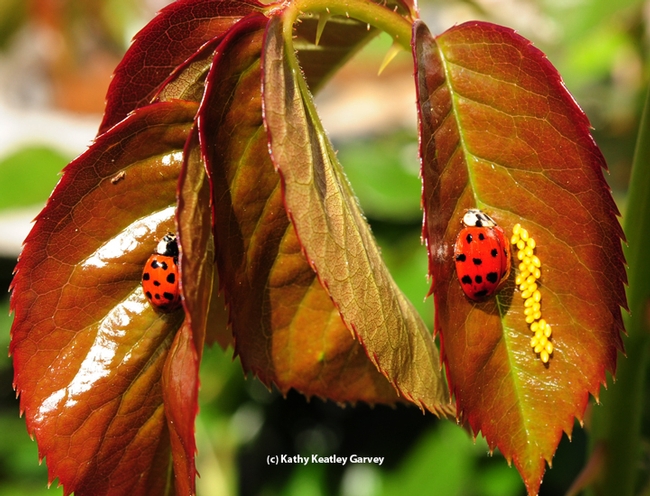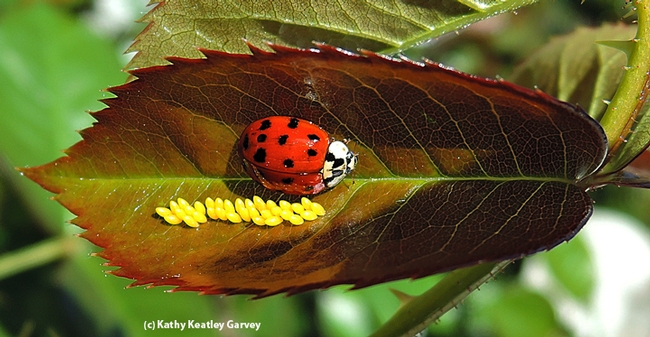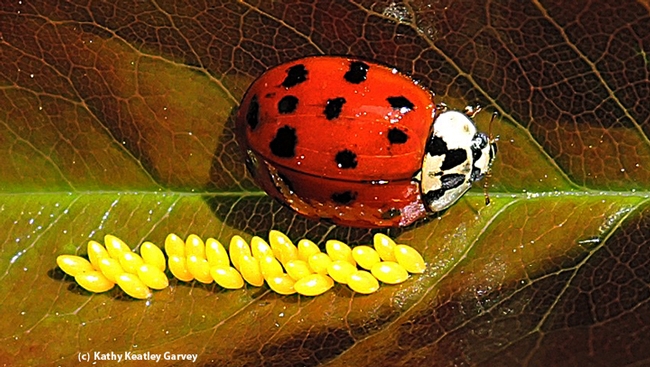There's gold on them thar roses.
No, not the kind of gold found during the California Gold Rush (1848–1855) that brought some 300,000 folks to the Golden State.
These are gold eggs from the multicolored Asian beetle, Harmonia axyridis, that we found on our Sparkle-and-Shine roses last week. The aphids are sparkling and the lady beetles are shining.
A native of eastern Asia, the multicolored Asian beetle was introduced in California by the U.S. Department of Agriculture in 1916, and in 1964 -1965 for the biological control of pecan aphids. Later, from 1978 through 1982, released beetles took hold in Connecticut, Delaware, Georgia, Louisiana, Maine, Maryland, Mississippi, Ohio, Pennsylvania, and Washington.
The multicolored Asian beetles are tiny, about 7 mm long and 5.5 mm wide. Spots? They range from as many as 19 spots to no spots at all. Color? From red to orange to yellow and (rarely) black. A key identifying characteristic is the black M-shaped mark behind its head.
The beetles, commonly known as ladybugs (but they're beetles, not bugs), are from the family Coccinellidae and they eat lots and lots of aphids and other soft-bodied insects, including scale insects and mites.
Aphids are not your friends. With their piercing mouthparts, they suck the juices right out of your plants, including your favorite roses. Lady beetles are your friends. They have voracious appetites and can gobble up 50 to 75 aphids a day.
Lush new growth often means a gathering of aphids, which means a gathering of lady beetles. Look closely and you might seen a cluster or row of about 20 oval eggs on the leaves.
That's the gold.
And so the cycle continues.
(Note: If you're looking for more roses, the California Center for Urban Horticulture, UC Davis, has just announced its 10th annual Rose Days will be Saturday and Sunday, May 6-7, from 10 a.m. to 4 p.m. at the Foundation Plant Services parking lot, 455 Hopkins Road, UC Davis campus.)
Attached Images:


